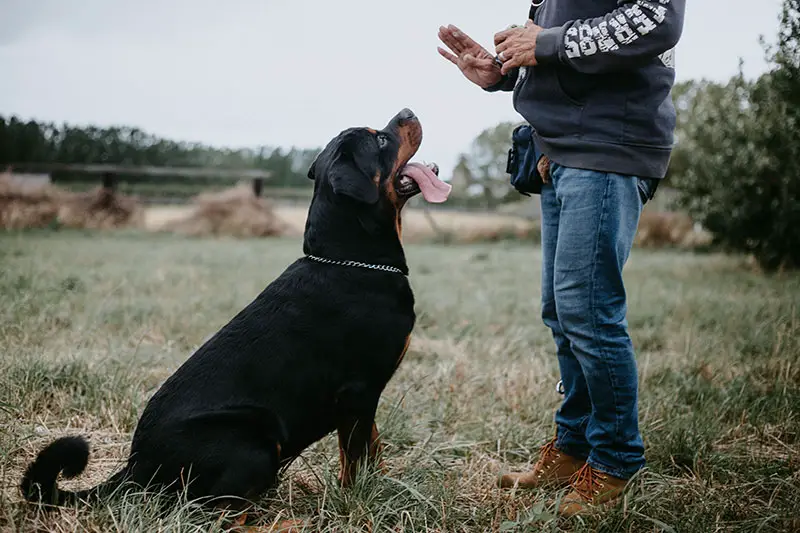Training your dog is an important aspect of pet ownership, as it helps to create a bond between you and your furry friend and ensures that they are well-behaved and safe. Whether you have a new puppy or an adult dog, there are several steps you can take to effectively train your dog and create a happy, harmonious household.
Step 1: Establish yourself as the pack leader Dogs are social animals and they look to their pack leader for guidance and direction. To effectively train your dog, you need to establish yourself as the pack leader and communicate in a clear and consistent manner. This can be done by setting boundaries and rules, such as asking your dog to sit before being fed or asking them to come when called. Consistently enforcing these rules will help your dog understand that you are the leader and that they need to follow your commands.
Step 2: Use positive reinforcement Positive reinforcement is one of the most effective training techniques and is based on the idea that dogs will repeat behaviors that are rewarded. This can be done by using treats, praise, or play as a reward for good behavior. For example, if your dog sits on command, you can immediately give them a treat or praise them. Over time, this will help your dog understand that good behavior leads to rewards and will encourage them to continue that behavior.
Step 3: Keep training sessions short and fun Training sessions should be short, usually around 10-15 minutes, and should always end on a positive note. This will help keep your dog focused and engaged and will prevent them from becoming bored or frustrated. Training sessions should also be fun for both you and your dog, so be sure to choose activities that both of you enjoy.
Step 4: Use clear commands Clear commands are essential for effective training, as they help your dog understand exactly what you want them to do. When giving a command, use a firm tone of voice and be consistent in the language you use. For example, if you want your dog to sit, always use the same command, such as “sit”. Avoid using different words or phrases for the same behavior, as this can confuse your dog and make it more difficult for them to learn.
Step 5: Practice regularly Training is a continuous process and requires regular practice to reinforce good behavior. This can be done through short training sessions, taking your dog for walks, or playing with them in the park. The more opportunities you have to practice with your dog, the faster they will learn and the more confident they will become.
Step 6: Socialize your dog Socializing your dog is an important part of training and helps to ensure that they are well-behaved in a variety of situations. This can be done by exposing them to different environments, people, and other animals. This will help them become confident and comfortable in new situations, making them easier to control and reducing the likelihood of aggressive or destructive behavior.
Step 7: Address behavioral issues If your dog is displaying problematic behavior, such as barking, digging, or jumping, it is important to address this as soon as possible. Behavioral issues can be difficult to change, so it is best to start working on them right away. This can be done by seeking the advice of a professional dog trainer or by reading books or articles on the subject.
In conclusion, training your dog requires patience, consistency, and a commitment to creating a happy and harmonious household. By establishing yourself as the pack leader, using positive reinforcement, keeping training sessions short and fun, using clear commands, practicing regularly, socializing your dog, and addressing behavioral issues, you can effectively train your dog and create a lifelong bond with your furry friend.









